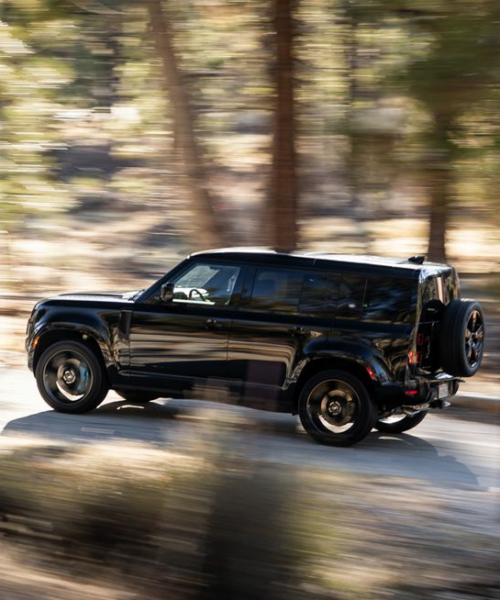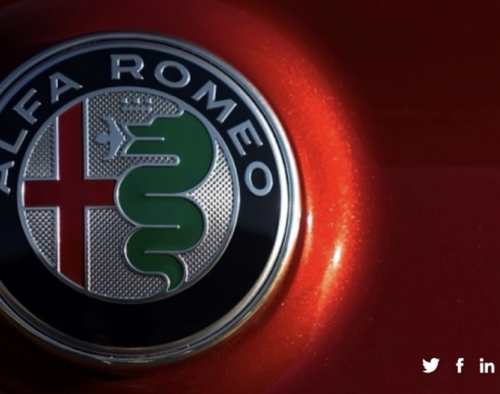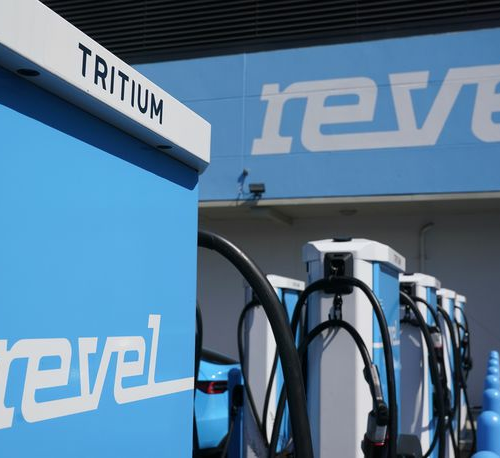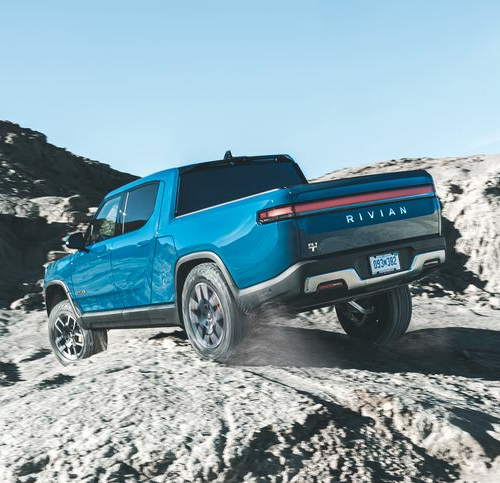BY K.C. COLWELL | CarAndDriver.Com
Troy Warren for CNT #cars
This is the first of two Blackwing models that are the last gasoline-powered V models the luxury maker will ever produce.
Farewell concerts too often aren’t the last of anything. Cream, The Who, Kiss, and even Ol’ Blue Eyes himself—Frank Sinatra—all returned to the stage after a so-called final tour. Cadillac, however, does not appear to be bluffing when it says that the CT4-V Blackwing and its larger, V-8-powered CT5-V Blackwing brother will be the last of the gas-powered V cars. Even if plans change and somehow more gas-powered Cadillac Vs come after these, like any farewell tour, the CT4-V Blackwing is something you don’t want to miss.
The CT4-V Blackwing is an evolution of the ATS-V, a sports sedan graced with handling and performance but held back by an unrefined engine and a child-size back seat. The new car has a similarly tight rear seat, but a larger door opening makes it easier for adults to get in and out.

Launched together, comparing the CT4-V Blackwing to the headlining CT5-V Blackwing might make the smaller sedan seem like an opening act. After all, the smaller Blackwing’s twin-turbo V-6, an engine that shares a lot with the V-6 in a Chevrolet Colorado, is nearly 200 horsepower off the other Blackwing’s 668-hp V-8.
Nearly 500 horsepower is still a lot of firepower, and the 472-hp 3.6-liter V-6 enjoys a linear and immediate—for a turbo—throttle response. And this engine has learned how to sing. Inside and out, it sounds nothing like the 464-hp version in the old ATS-V. When the variable exhaust bypasses the muffler, it sounds angry, purposeful, and intimidating. To enhance the V-6 notes inside, the AKG audio system plays actual recordings of the V’s engine through the speakers. It’s more like autotune than the outright fakery of Milli Vanilli.
Equipped with the $3175 10-speed automatic transmission, it should be able to bolt to 60 mph in 3.8 seconds. A no-cost six-speed manual will add a few tenths. In your mind, however, the manual will seem quicker thanks to a no-lift-shift feature. Keep your right foot pinned to the firewall, stab the clutch, and grab the next gear. The Tremec TR-6060 shifts with ease and accuracy. And if you do select the manual, Cadillac includes a bonus: titanium connecting rods. Roughly six times more expensive than the automatic’s forged-steel rods, the lightweight material reduces reciprocating mass, further improving engine response for manual buyers.
To make the manual version financially feasible, Cadillac uses what it calls “additive manufacturing.” That’s marketing spin for “some of the parts are 3-D printed.” In addition to manual-specific HVAC ducting around the center console, the shift-pattern medallion on top of the shifter comes from a 3-D printer. If you’re wondering about burning your hand on the shifter’s H-pattern, engineers went so far as to add additional material below the metal trim to draw heat away and avoid burning the driver on hot days. Cadillac patented the design.

BMW still offers a manual in its M3, but what BMW forgot, Cadillac has learned. Steering feel, also an ATS-V strength, is alive and well despite the reports that it died with electrically assisted steering. The 4-V’s wheel is brimming with feedback and just-right effort levels that avoid qualifying for a CrossFit workout.
There is also a very Ferrari-manettino-looking switch on the steering wheel. This $500 option makes it simple to cycle through the numerous stability-and-traction-control programs of General Motors’s Performance Traction Management (PTM) system. There are five PTM modes: One is for the wet, two have an element of stability control that use the brakes to rein in sloppy cornering, and the upper two use the traction control to maximize corner exit speed. The raciest mode is aptly named Race.

PTM works so well that development drivers use it while chasing lap times. And if you didn’t already know, the CT4-V Blackwing stomped a 2:52.5 lap on Virginia International Raceway’s 4.1-mile Grand Course, the same configuration we use for Lightning Lap. That’s a strong time for a 3850-pound sedan. The only four-door we’ve lapped quicker in 14 Lighting Lap events is the Mercedes-AMG GT63 S,which posted 2:49.3. The next slowest sedan is the BMW M5 Competition with a time of 2:54.0.
A lot of credit is due to the Michelin Pilot Sport 4S tires size 255/35R-18 and 275/35R-18. These aren’t off-the-shelf Michelins. While Most 4S tires utilize two compounds, these Cadillac-specific tires use three different rubber compounds. The third one is essentially an R compound found in streetable track tires, such as the Pilot Sport Cup 2.
Keeping those special tires in constant contact with the tarmac are GM’s latest magnetorheological dampers, or MR 4.0. The ride-handling balance is as good as we’ve ever experienced in the segment. The lovely ride and supportive seats offer multihour comfort and appropriate bolstering for track work.
There are drive modes that set the steering effort, powertrain aggression, engine volume, brake feel, and damper stiffness. Normal, Sport, Snow/Ice, and Track are preset from Cadillac, but owners can tailor their setup in V Mode and My Mode. The V Mode has a steering wheel shortcut on the other side of the PTM switch, and My Mode will remain the default setting after a key cycle, so if you dial in a magic combination it won’t be lost every time you start the car. We never found a need to play weekend engineer because the Normal mode proved perfect for the winding roads of North Carolina and Virginia and Track mode made us right at home on VIR’s Full Course.
Launched together, comparing the CT4-V Blackwing to the headlining CT5-V Blackwing might make the smaller sedan seem like an opening act. After all, the smaller Blackwing’s twin-turbo V-6, an engine that shares a lot with the V-6 in a Chevrolet Colorado, is nearly 200 horsepower off the other Blackwing’s 668-hp V-8.
Nearly 500 horsepower is still a lot of firepower, and the 472-hp 3.6-liter V-6 enjoys a linear and immediate—for a turbo—throttle response. And this engine has learned how to sing. Inside and out, it sounds nothing like the 464-hp version in the old ATS-V. When the variable exhaust bypasses the muffler, it sounds angry, purposeful, and intimidating. To enhance the V-6 notes inside, the AKG audio system plays actual recordings of the V’s engine through the speakers. It’s more like autotune than the outright fakery of Milli Vanilli.

The Cadillac’s brakes were happy on the track too. Fade free and strong, we noticed that engineers added a separate parking-brake caliper for the rear instead of a drum-in-hat parking brake, a change that saved more than two pounds of rotating mass.
There are a number of options that alter the Blackwing’s appearance. Carbon packages bring book-matched—symmetrical layup of weave—carbon-fiber-reinforced plastic to the exterior and interior. In addition to looking good, Cadillac tells us that the Carbon Fiber 1 Package is functional and generates approximately 169 pounds of downforce at 180 mph. It includes a front splitter, rear wing, and dive planes in carbon, as well as turning vanes, which are aerodynamic flaps used to direct airflow, to improve airflow around the front tires. Carbon Fiber 2 Package adds side rockers and a rear valance in the lightweight material.

There are no exterior Blackwing badges to inform the world of what you bought. The carbon-fiber packages are one way of telling, or you can peer inside and spot “Blackwing” on the seat piping. The closer you look the more of the letter V you’ll see. Those turning vanes are embossed with Vs, and the Cadillac racing motif is found on the underbody too. Even the case of the electronically controlled limited-slip differential has a V cast in its housing.
Cadillac isn’t price gouging its fans. A base CT4-V Blackwing starts at $59,990, splitting the difference between the smaller sports sedans, such as the Mercedes-AMG CLA45 and Audi RS3, and the larger, more established group, including the BMW M3 and Alfa Romeo Giulia Quadrifoglio. Fully loaded, the 4 still undercuts the M3 and Giulia. A special car that offers a special experience, we would love to see an encore, but we’d buy one now just in case this really is the end.

In Other NEWS



































